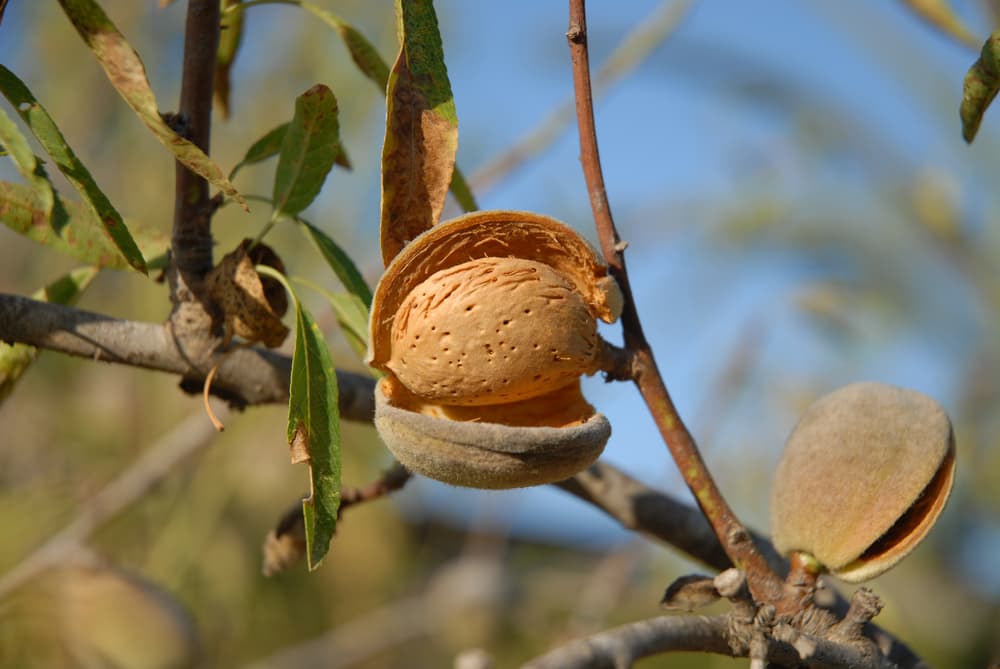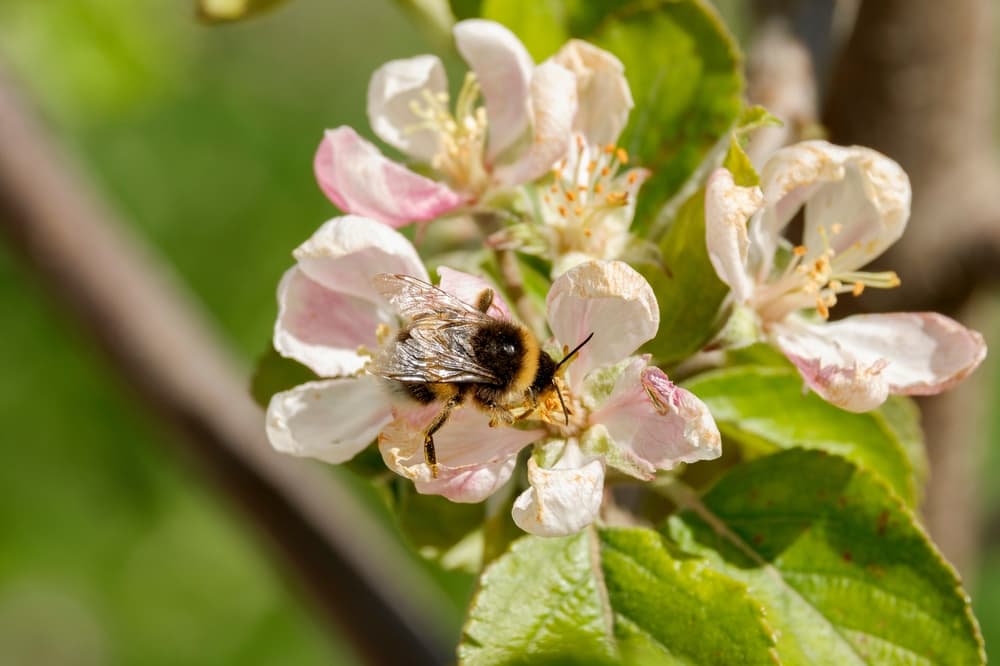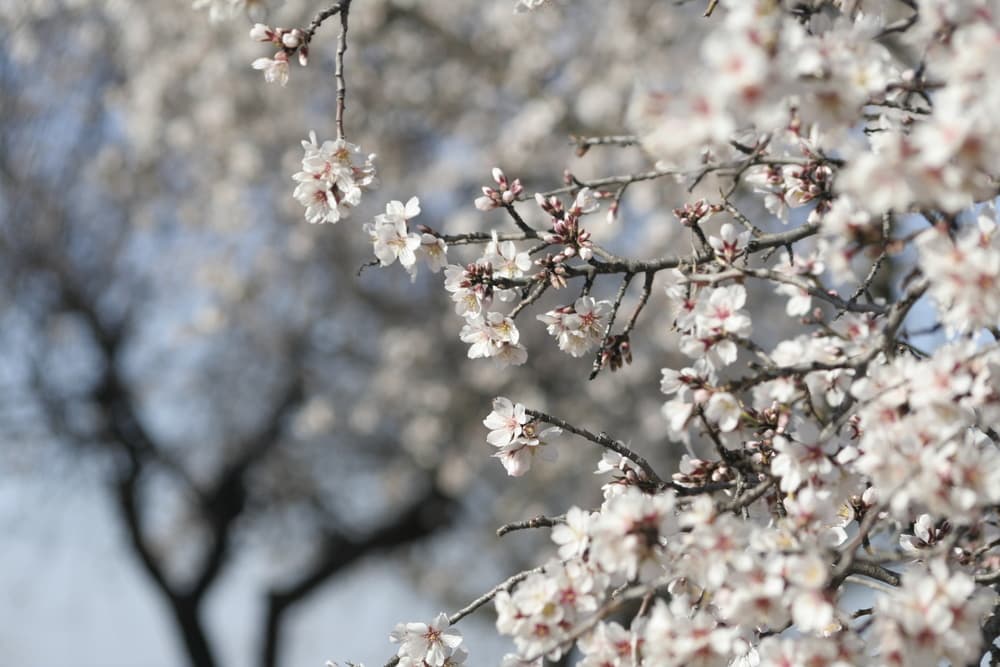These Noteworthy Almond Tree Types Produce Lovely Blossom And A Robust Harvest

Reviewed By COLIN SKELLY

Colin is a Horticulturist and Horticultural Consultant with experience in a range of practical and managerial roles across heritage, commercial and public horticulture. He holds the Royal Horticultural Society’s Master of Horticulture award and has a particular interest in horticultural ecology and naturalistic planting for habitat and climate resilience.
IN THIS GUIDE
- 1) Prunus dulcis
- 2) P. dulcis ‘Macrocarpa’
- 3) P. dulcis ‘Ingrid’
- 4) P. dulcis ‘Robijn’
- 5) P. dulcis ‘Princess’
- 6) P. dulcis ‘All-In-One’
- 7) P. dulcis ‘Nonpareil’
- 8) P. dulcis ‘Carmel’
- 9) P. dulcis ‘Texas Mission’
- 10) P. dulcis ‘Marcona’
- 11) P. dulcis ‘Valencia’
- 12) P. dulcis ‘Pizzuta’
- 13) P. dulcis ‘Mamra’
- References
ALMOND TREE GUIDES
Varieties
Almond trees come in quite an array of varieties.
There are California’s high-yield commercial cultivars, and there are the ‘connoisseur varieties’ of Southern Italy, Spain, and Iran that are the pride and joy of growers of those respective countries.
Not to forget the ‘no-yield’ dwarf flowering ornamental trees.
Underneath we present the varieties that we recommend for British home gardeners.
1) Prunus dulcis

The ‘mother ship’ and unlike many cultivars, it is fairly drought-tolerant.
“Unless you really are out to optimise your almond harvest, the drought tolerance of the species would provide you with flowers, harvest and resilience in a changing climate,” adds Colin Skelly.
Its fruit is ready for harvest around September.
Though it can be grown in British home gardens, better options are available.
2) P. dulcis ‘Macrocarpa’
A good choice for British gardens.
It is early to blossom in early spring, producing pale pink and white flowers, and also produces an early harvest in August.
The almond is quite sweet.
3) P. dulcis ‘Ingrid’
This is a popular cultivar that is gaining ground in England because of its lovely pink blossoms in spring and the rich buttery taste of the almond.
Be warned that it is very hard-shelled; on the other hand, this is a self-pollinating variety.
4) P. dulcis ‘Robijn’
Another top choice.
For one thing, this one is soft-shelled and for another, the almond has a remarkably sweet flavour.
Its blossoms are especially delightful. This too is a self-pollinating variety.
5) P. dulcis ‘Princess’

Rounds up the European self-pollinating varieties.
One can consider this a ‘connoisseur almond’ for the amateur gardener because the shells are soft and the almond is unusually sweet and scented, ready to eat off the tree.
6) P. dulcis ‘All-In-One’

An American self-pollinating variety that grows to only about 4m.
The fruit is both soft-shelled and sweet.
It blossoms late and correspondingly yields a late harvest from the end of September to early October.
From the many dozens of other almond varieties, here are some of the most noteworthy –
7) P. dulcis ‘Nonpareil’

Those famed California almonds that are available around the world are from the ‘Nonpareil’ tree which is the world’s most abundant cultivar.
The almonds are valued for their smoothness and good taste.
It bears high-yielding drupes as the almond content (as opposed to shell) is from 60-65%.1New approaches For Almond Production In Mediterranean Climates: A Review. (n.d.). eScientific. Retrieved March 9, 2023, from https://escientificpublishers.com/new-approaches-for-almonds-prunus-amygdalus-batsch-production-in-mediterranean-climates-a-review-JAA-05-0055
8) P. dulcis ‘Carmel’
‘Carmel’ is a more recent California cultivar.
The almond is smaller and rounder.
They are usually blanched or roasted for munching on ‘out of the bag’.
9) P. dulcis ‘Texas Mission’
‘Texas Mission’ is not only a high-yield tree, it is one of the few commercial varieties that can relatively easily be grown in the garden.
It produces a sweetish almond.
10) P. dulcis ‘Marcona’

The ‘Marcona’ produces an almond that is short and plump in appearance.
The nut is soft and has a distinctly sweetish flavour.
From Spain, it is considered a connoisseur almond.
11) P. dulcis ‘Valencia’

‘Valencia’ almonds are more oblong and flattish.
Also from Spain, these are not soft like the Marcona and have a more robust flavour.
12) P. dulcis ‘Pizzuta’

‘Pizzuta’ from Avola, Italy, is identified by the reddish-brown nut.
A sweetish almond that is considered a fine variety, it is often used for making confectionery.
13) P. dulcis ‘Mamra’
Though several kinds of almonds are grown in Iran, ‘Mamra’ is the country’s top variety.
It is distinguished by the soft shell and the nut’s wrinkly, curved form.
A sweet almond, it is ideal for confectionery.
References
- 1New approaches For Almond Production In Mediterranean Climates: A Review. (n.d.). eScientific. Retrieved March 9, 2023, from https://escientificpublishers.com/new-approaches-for-almonds-prunus-amygdalus-batsch-production-in-mediterranean-climates-a-review-JAA-05-0055

